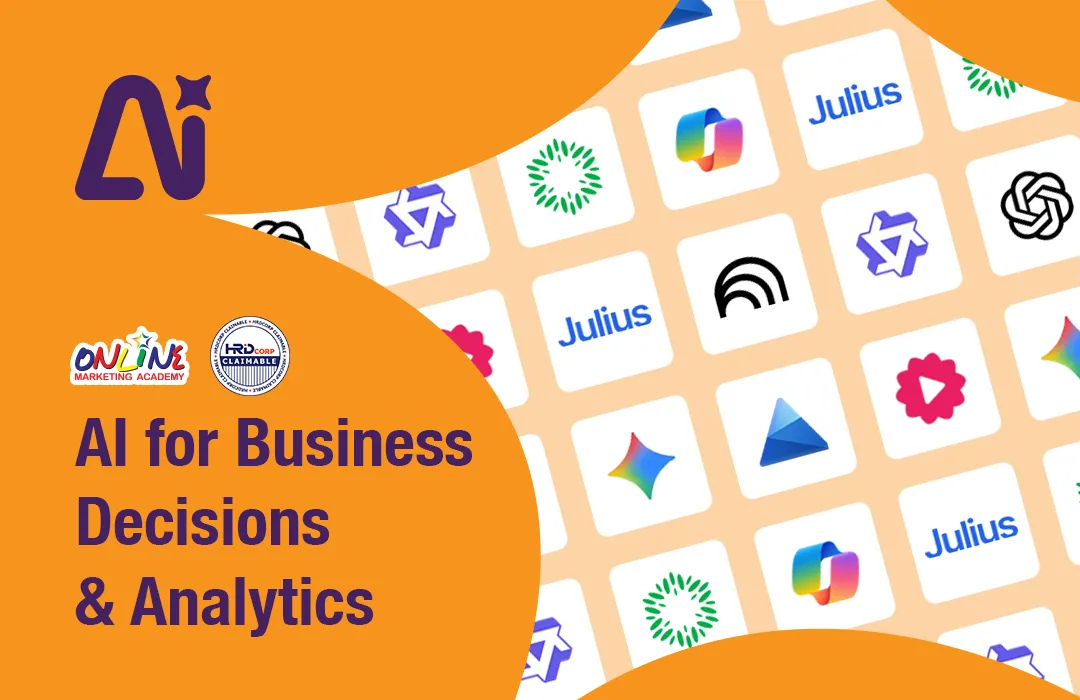Malaysia’s education, business, healthcare AI journey in 2024
03 January 2025MALAYSIA has taken the fast lane on its technology transformation journey this year, reshaping key sectors including education, business and healthcare.
With the adoption of emerging technologies such as artificial intelligence (AI), digital banking and e-commerce, the country is not only enhancing operational efficiencies but also tackling fundamental challenges and unlocking new avenues for growth and innovation.
Technology has become deeply integrated into daily life across Malaysia, reshaping traditional systems and workflows. Classrooms are evolving into smart learning environments, businesses are being empowered with innovative digital tools, while healthcare is undergoing a transformation through AI-powered diagnostics and telemedicine, ensuring greater access and efficiency in patient care.
Education is among the sectors experiencing profound transformation, driven by technological advancements.
Universiti Kebangsaan Malaysia’s (UKM) Centre for Professional and Leadership Development director Assoc Prof Ts Dr Helmi Norman highlighted the pivotal influence of technology in redefining Malaysia’s educational landscape.
He said AI-driven technologies and digital tools are game-changers for personalised learning, and progress in Malaysia’s education system was seen in 2024.
These tools help tailor learning experiences to each student’s pace, strengths and needs, making education more effective and engaging.
For instance, AI-powered platforms are being used in schools to identify where students are struggling and recommend resources or exercises to help them catch up.
This ensures that no one gets left behind while also challenging high-achievers to excel further.
“AI allows us to create highly adaptive learning experiences that were impossible just a few years ago.
“Students who need additional support can receive it in real-time, while those who excel can be continuously challenged,” said Helmi, who is also an associate professor of Digital and Futuristic Education at UKM’s Faculty of Education.
One example in Malaysia is how some schools are using AI tools for language learning, where students get real-time feedback on their pronunciation and grammar.
Similarly, AI-driven platforms are helping students prepare for exams like by analysing past performance and suggesting targeted study plans.
Meanwhile, the MetaSkool Project by Malaysia Digital Economy Corp in collaboration with UKM, empowers teachers and students to create AI-based learning content and build 3D virtual worlds for immersive learning.
Helmi noted that these projects show how technology can bring creativity back into the classroom, making learning more engaging and effective.
Furthermore, initiatives like the Digital Educational Learning Initiative Malaysia and the integration of 5G in education are paving the way for wider adoption.
With continued investment in infrastructure and teacher support, Malaysia has the potential to make personalised learning a reality for students across the country.
“We need to focus on training educators to feel confident using these tools. Teachers are the key to unlocking the full potential of technology in education,” Helmi added.
However, integrating technology into education comes with its fair share of challenges — especially when it comes to accessibility for rural and underserved communities.
Connectivity is still a big hurdle in 2024. While 5G is rolling out in bigger cities, some rural areas are still struggling with patchy Internet access or none at all.
Unreliable Internet hinders students and teachers in these areas from fully using online learning platforms or digital tools and next-gen technology such as the metaverse.
Another issue is affordability. Even with government initiatives like Peranti Siswa, which provide tablets for students, not every family can afford additional devices like laptops or pay for data plans.
This creates a digital divide where urban students have access to cutting-edge tools, but rural students might only have the basics or nothing at all.
Teacher training is another challenge. Helmi stressed that many teachers in rural areas do not have the opportunity to upskill and learn how to use technology effectively in the classroom.
For example, tools like augmented reality, virtual reality or AI-driven platforms are great for personalised learning, but they require teachers who are confident and comfortable with the tech to make the most of it.
“Without proper training, even the best technologies can fall flat in the classroom.
“We need to ensure teachers are equipped not just with devices but also with the skills to use them effectively,” Helmi said.
Despite these challenges, there are promising efforts to close the gap. The government is expanding high-speed Internet coverage through initiatives like Jalinan Digital Negara (Jendela), and some schools are using solar-powered Wifi solutions in remote areas.
Non-governmental organisations and private companies are also stepping in, providing digital literacy workshops and tech resources to rural communities.
The integration of AI and digital tools is transforming Malaysia’s business sector, especially for small and medium enterprises (SMEs).
Alliance Bank Malaysia Bhd marketing and business development officer Dr Aaron Sum said AI is enabling SMEs to excel in an increasingly competitive market by enhancing agility and efficiency.
“We believe that AI can help level the playing field for small businesses, empowering them to become more agile, efficient and competitive by providing tools that enhance decision-making, optimise operations and drive innovation,” he told The Malaysian Reserve (TMR).
AI-driven tools are being piloted in areas like supply chain planning, production and inventory management through more accurate demand forecasting.
For instance, AI-driven design tools accelerate product development cycles, allowing SMEs to refine and rapidly prototype ideas during early-stage testing. These innovations enable them to speed up go-to-market strategies and commercialise new products efficiently.
“AI acts as a layer of intelligence to raise productivity and effectiveness, making it a powerful tool for small businesses that lack economies of scale,” Sum said.
Cloud-based solutions have also made such technologies more economically viable for smaller businesses, allowing them to leverage advanced tools previously accessible only to larger corporations.
When it comes to cost management, Sum advised SMEs to adopt a clear, use-case-driven approach to AI implementation.
“The optimal approach is starting small with pilot projects and ensuring there is a clear vision of what problem needs to be solved. Getting carried away with the hype around AI can lead to misaligned investments.”
Alliance Bank also supports SMEs by facilitating access to government-related funding for technology adoption, such as the High Tech & Green Facility, which offers lower financing rates for implementing digital and Industry 4.0 solutions.
He added that AI is transforming the strategic landscape for SMEs by enabling innovations such as AI-driven supply chain planning and inventory management.
Moreover, to ensure sustainable AI adoption, SMEs are encouraged to clearly define their use cases and start small before scaling up. Through targeted initiatives and practical applications, SMEs can harness AI to thrive.
The healthcare industry in Malaysia is also reaping the benefits of technological advancements, with medical imaging and diagnostics being a significant focus.
Siemens Healthineers MD for Singapore and Malaysia Siow Ai Li highlighted the transformative impact of AI-powered medical imaging technologies on patient care.
“Leveraging advancements in medical imaging technologies, including AI-powered MRI and CT scans, can enhance diagnostic accuracy and patient outcomes.
“By integrating AI, we can analyse imaging data more precisely and quickly, leading to earlier and more accurate diagnoses,” she said.
These advancements are not only improving diagnostic precision but also enhancing the overall patient experience. By reducing scan times, the process becomes more comfortable for patients, especially in high-volume hospitals managing long backlogs.
AI ensures consistent and reliable results across scans, which is critical for monitoring serious conditions such as cancer, cardiovascular diseases and neurological disorders.
Siow added that given Malaysia’s diverse healthcare landscape, ensuring rural and smaller healthcare facilities have access to cutting-edge diagnostic tools is a key priority.
She shared that Siemens Healthineers deploys scalable and practical solutions that can be easily integrated into various healthcare settings to enhance patient outcomes nationwide.
One example is the High-V MRI platform, which features helium-independent magnet technology. This innovation is advantageous in areas where logistics and installation can pose significant challenges.
Meanwhile, the Dual Source CT technology, SOMATOM Pro Pulse, utilises 20% less power to improve energy efficiency and reduce lifecycle costs.
These systems are supported by IT solutions that enable remote access and decentralised point-of-care management, ensuring better support for rural areas.
Siemens Healthineers also emphasises comprehensive training and support for healthcare professionals in these areas.
“Applications specialists are dedicated to ensuring end-users are well-versed with the system, equipping healthcare providers with the skills needed to serve their patients effectively once the systems are operational.
“By focusing on innovative solutions, training and sustainable strategies, Siemens Healthineers is ensuring that advanced diagnostic technologies reach all corners of Malaysia, contributing to a more equitable and efficient healthcare system,” Siow said.
She added that Siemens Healthineers’ AI-powered solutions assist in data analysis and interpretation, enabling healthcare providers to make faster and more accurate decisions.
These technologies help streamline clinical workflows and optimise operational efficiencies which not only enhances patient care but also reduces the burden on healthcare professionals, allowing them to focus more on patient interaction and less on administrative tasks.
However, Malaysian hospitals face several challenges in adopting AI-powered tools for diagnostics and patient care. These include infrastructure development, cost management, skill enhancement, workforce shortages and patient engagement.
Ensuring robust digital infrastructure, such as reliable Wifi and advanced IT systems, is critical for effective AI deployment.
Hospitals also need to strategically optimise expenses while investing in necessary technologies to ensure sustainable implementation.
Training and upskilling healthcare professionals to effectively use AI tools is another key challenge.
“There is a need to foster a culture of digital literacy and innovation among staff to maximise the benefits of AI-powered tools,” Siow noted.
Malaysia’s adoption of technological advancements is reshaping economies and societies. With a focus on innovation, accessibility and sustainability, the country is emerging as a leader in using technology to overcome challenges and create opportunities.
AI, digital tools and connected ecosystems are driving progress, ensuring the benefits of this revolution reach all sectors and communities.
-----------
This article first appeared in The Malaysian Reserve weekly print edition
Source: The Malaysian Reserve






 WhatsApp Us +6011 1144 5462
WhatsApp Us +6011 1144 5462



